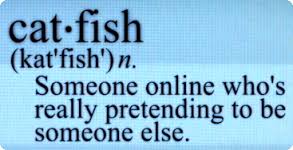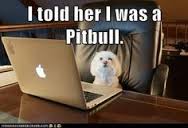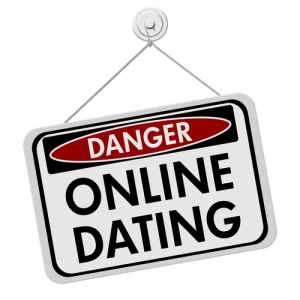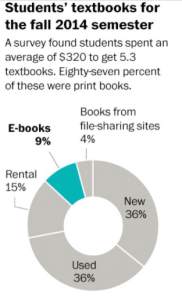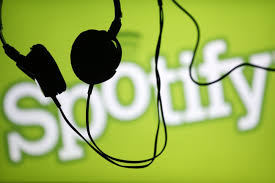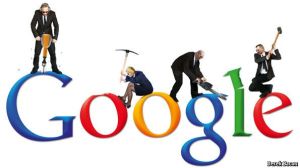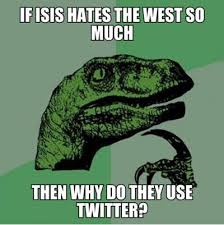Wanted: Celebrities… no talent, looks, or brains needed
Being famous or a celebrity is something that every one has thought of once of twice in their lives.
But just how easy is it to become famous?
The web for one, has completely changed the ability to become famous. In the pre-internet era, becoming famous was just as rare as winning the lottery. Not only did you usually have to know somebody in the industry, you had to have exceptional amounts of talent or brains. There were high barriers to entry meaning that not everyone had a good shot and that it was quite difficult to rise to fame.
But because of the web, it is now easier than ever to become famous.
No prior experience needed. The entry age to become famous is get younger and younger. The article from The New York Times, “No Stardom Until after Homework” talks about average teenagers who have traded in the Barbie doll for a couple million. And what is it that allows for this easy access to fame?
The Internet and Social media really allows for fame to take place and allows for content to go viral. Cinkle, 14 ,talks about how she became famous almost over night for being that girl in the car of the “Friday” music video by Rebecca Black. She tells us how she used social media to create fan pages for herself and tend to her up and coming fame where she would spend hours answering questions to her fans. The article states that “Youtube” is where most pre teens and teens go to to start their shot at fame.
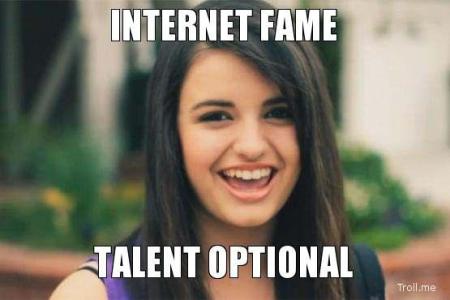
Teenagers upload videos on “how to do” several things including applying make up as well as shop for outfits which can sometimes get thousands of views. The article states that this has happened for many normal high schoolers who eventually drop out to manage their “new found fame”, with a lot of extra easy earned cash.
“In less then a month, Cinkle had gone from anonymous high school student to micro-celebrity”
-The New York Times
YouTube is online website that is the most popular when it comes to getting famous.
Gone are the days where you have to audition across the country in the hopes of landing an unpaid gig that might lead to your “discovery”. All it takes now is a camera, a room, and well.. your-self.
An article in the Business Insider ranked “YouTube stars” on the amount of money they make depending on which ads advertisers can work with. Although YouTube takes 45 percent of the profit, YouTube can turn anyone with a witty personality or make up tutorial skills for that matter, into a millionaire. The article begins with number 20 on the list of people who are earning as much as doctors, lawyers and celebrities just by creating home made videos. $134,000-$1.32 million estimated yearly income after YouTube’s 45% cut.
476,000 total subscribers.
443 million total views .
This isn’t the profile of one of Hollywood’s actors or the CEO of Google, this is just a young boy and his camera.
Evan is the 7-year-old face of EvanTubeHD,a family-friendly YouTube channel where Evan (and occasionally his sister or mom) reviews toys and video games.
The number one YouTube celebrity on the list is PewDiePie who makes over 7.4 million dollars a year.
But what exactly does he do might you ask? Well he didn’t find a cure for AIDS or cancer, that’s for sure. According to the article ,“ YouTube star PewDiePie responds to haters over 7.4 million annual earnings” in The Guardian, good old PewDiePie has to defend how much he earns from haters who accuse him of sitting down on his bum all day, which in reality is what he does.
The article states that PewDiePie began his hit videos just by reporting on video games, something that hadn’t been done before. This concept led him to become YouTube’s most watched “celebrity” in 2014.
The internet has democratized fame seeing that now anyone , everywhere with a broadband connection and a recording device has the potential to rise to fame.
Social media allows for fame to take place and allows for content to go viral. In reality, all you need is a smart phone and social media accounts to either create a Facebook, YouTube, twitter or Instagram page. The possibilities for becoming famous are available to anyone with little or no money, talent or time.
In the start of Hollywood, being a celebrity was not easy. The great actors like Audrey Hepburn or Clark gable were celebrities because of their unparalleled talent and look on stage. But now, people can become famous for all the wrong reasons thanks to the internet.
Let’s take Rebecca black or Kylie Jenner, who is part of the already famous Jenner/Kardashian gang. Unlike Kourtney or Kim or Khloé, Kylie was born and raised in the online era. She’s a social media native. And she has lots of fans—many who are digital natives, too.

Kylie uses social media such as Snapchat, instagram and twitter as a base to upload videos, and her day- to-day happenings which help make her become even more famous. In the case of Rebecca black, a girl with little to no talent or looks to be quite honest, was turned into a over night star and as her video was shared, re tweeted and received millions of views. Whether viewers liked her video or not, the fact that it was shared so often made it go viral and ultimately gave her a rise to fame.
Uploading pictures can also lead to fame with the app called Instagram. Nowadays anyone can become Instafamous. It begins with uploading single images and then getting more and more followers until you ultimately get sponsored by a brand.
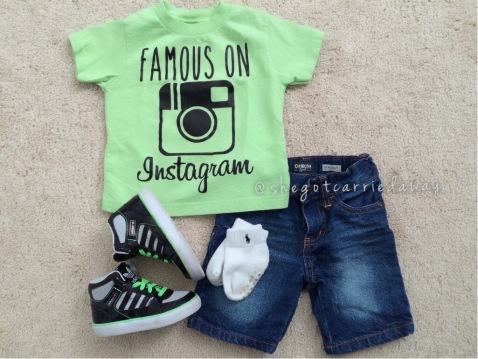
“Social Media is centered around the discourse of becoming a star”
-The New York Times
But why exactly does the Internet allow for people to become famous? Even when they have no talent? Is it just because the Internet provides a certain platform?
The key part of modern day fame lies in VIRALITY. Once uploaded, a video can be passed on and watched millions of times all over the world. Pictures get shared, tweets get re-tweeted, videos receive likes and views. Many C-listers ( aspiring actors) or even girls who work at Hooters, know that the internet leads to fame which is why many Sex tapes get “accidentally” leaked, thus getting the chance to go spread.
All it takes is for it to go viral and there we have it!… a new celebrity.. voila!
I also think that the Internet has trivialized fame and made it less complex then it really is. In the post internet era, society used to admire famous people and celebrities hoping to one day maybe get a glimpse into their lives. Now, with the Internet, being famous isn’t seen as being that glamorous or as “special”. I for one, think that due to the fact that we can see the way celebrities live and act on a daily basis, we become accustomed to it. Since, we see so many different people become famous and the circle of celebrity keeps on shifting, we think of fame as something easy to come by and quite undervalued. In fact, I think to myself that maybe if I started a blog, and uploaded some revealing photos on Instagram I might too have an easy shot at fame.
The concept of fame isn’t what it used to be.
Get your “Jessica” on aisle two
We find our selves purchasing things every day from Crest toothpaste and Bounty toilet paper to that Prada handbag. The world we live in is filled with brands. But there is a new item on the shelf, a different kind of brand..the human brand. So I, and many others ask the question of the decade, “Have we become a brand ourselves?”
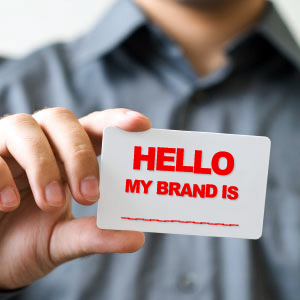
If more and more people are creating a brand.. what is it that enables this phenomenon? How has our society changed?
The popularity of online social networks is the answer.
With everyone being constantly wired and on the internet, we are expected to keep our presence up 24/7.
Long gone are the days where you could act a certain way at work but then could come home and unwind. Nowadays, pressure is on and people are either scrolling through Facebook or uploading to Instagram ever minute of the day.
An online presence or brand is extremely important in any business world. Joshua Baker, a financial advisor, is a perfect example of this. Baker has a twitter feed with under a million followers where he combines business facts with his own side of personal quirky and funny comments. This “online brand” that he creates for himself has led him to many clients who search him out due to the “online” side or brand he portrays.
Twitter is an online social network that allows it’s users to upload an image and is largely used to create a brand. In the “bio” section, people write a small introduction to who they are and what they are about. This allows for viewers to decide if they like the person and if they want to follow or “purchase the brand”.

Online networks allow us the opportunity to be whatever and whomever we want to be.
As profile turns into a brand these profiles becomes a self-representation of our selves. For example, people use Instagram to upload pictures of them selves eating a quinoa salad with organic kale while participating in every 5k… a personal brand depicting healthy life styles. Many women create profiles with witty comments and retweets of their favorite comedians and celebrities, a personal brand depicting their personable character. We all know that friend who uploads pictures of every luxury purchase they have ever made to show the world that.. “hey”! They’re a Fashionista. An aspiring journalist would use facebook to upload articles and content that they have created perhaps with a picture of themselves.
Image, as I just introduced is a very important part of an online brand. It is for this reason that most online platforms are focused on uploading pictures.
Would you even use Facebook if you couldn’t see pictures? The article in the New York Times, “Glamour Photos Replace Selfies” states just how important this image is. There are times, it seems, when an iPhone and an outstretched arm just won’t do. Your average Jane can now call a professional photographer and shoot images that he or she wants to use in terms of self representation. No more college head shots or boring pictures in a suit. Self branding uses images that conjure thoughts of creative strong and sexy people that you want to associate with, that you want to buy into.
Social media makes this all possible.
Indeed, an impact photo is more than just a vanity statement these days, since it’s hard to say where “personal” ends and “professional” begins on Facebook and Twitter, said Sean Behr, a tech entrepreneur in San Francisco.
The article in the Wall Street Journal which gives tips on creating a brand in the real and online world, mentions this fact as well.
How you look is very important. If you don’t look presentable, no one is going to care enough to continue talking with you.
Appearance is the first box that needs to be ticked off.
The article in The New York Times, “Glamour Photos Replace Selfies” shows us just how important it is to have a professional picture to create a brand for ones self. Having a boring headshot taken or a Selfie from an Iphone, wont create that appeal of a professional image which ultimately won’t Sell well.
Then comes consistency.
Consistency is critical- even though it is difficult in our always connected lives. “Presence cant just be there on Monday’s when you are rested”, says Elizabeth Holmes from the Wall Street Journal article. Due to the fact that we are always logged in, society expects us to constantly tweet, upload, and like.
I for one, think that it is very important to create an strong online presence.
I think that people are brands and today’s available social media platforms make it happen.
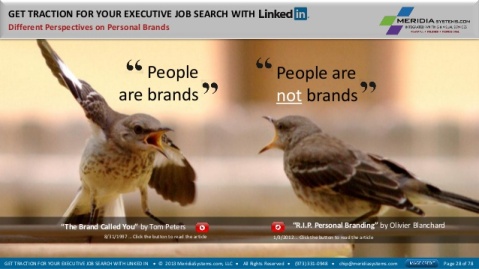
In a society that is based off of how many instagram followers one has or how many likes one receives, building online networks solidifies a personal brand. It is also important to create a brand for career prospects. I remember that after my internship for the south African Broadcasting Corporation in South Africa, my supervisor told me that developing a brand was one of the most important things to do as a young journalist. Me? a brand? I left the lunch in utter confusion thinking of different ways I could start.
I didn’t know this yet, but it was actually quite simple.
Social media helps one create this ideal, as it is easier then ever to construct a social identity and presence online.
In fact, it is almost impossible not to create a brand for ones self if one uses social media.
As soon as you upload a single picture, you begin to attribute images to your persona. Facebook for example, makes it easy to create a brand for your self as you upload images of how you want people to think of you. Do you want a shot of power? A boost of confidence? Are you a fitness junkie who loves animals? Each and every image you upload contributes to the way you position and ultimately sell yourself to the audience. Just like the article in The New York Times states… before social media, creating a self brand was left for celebrities and models or those who had enough social influence to be on the cover of a magazine.
“We’ve been flipping through magazines since we were 5 years old, looking up to these glamorous women,” Ms. DeVee said. “Today, we can create our own magazines through social media.”
The concept of self branding has now been democratized due to the fact that every one can now hire a photographer for a couple hundred dollars and upload them unto various different platforms. One no longer has to wait to be featured in a magazine, creating a self brand starts with the click of a button..and anyone with wifi can create multiple accounts.
Linkedin is another popular site that strongly contributes in cerating a personal brand. You sign in and begin by uploading a picture of yourself. “People buy you, more so than your exact services or goods,” said a customer of a professional photo-shoot.
“My business is truly and authentically me, so I wanted to make sure that this came out in my social media presence.” she says.
“Social media is a place where real business is actually happening,” said Mr. Behr, 38. “Customers of our business follow me on Twitter, they’re friends on Facebook. If they go see the profiles of this guy in this fake photo, wearing a suit and tie, they’re going to think, ‘Ugh, that’s not who we thought he was.’
How do you establish a personal brand?
Holmes, the author of “How to Develop your Personal Presence on Social media and on Real life” creates a list stating that you can begin by writing down everything that is positive about your self. Then, use the list you create to know what to emphasize when making an online presence.
Don’t try to be someone you aren’t….. but don’t be afraid to brag a little.
Take note on how extroverts move and speak and use those findings to turn heads and ultimately build up social capital at your next cocktail party.
Remember You are the brand and networking is the currency… welcome to the online world.
The Ugly Face of Gossip
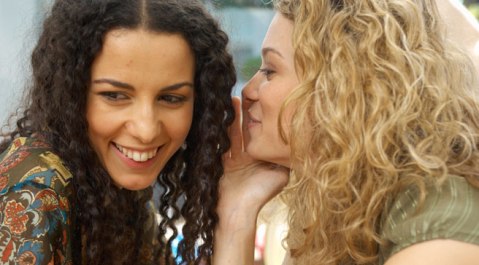
Ahh.. the comfort of sharing a few laughs with the ones we love, as we sit huddled up telling friends other people’s misfortunes. Saying bad things about other people feels good, too good
It’s called gossip
But is gossip necessary for survival or is it just something we use to pass time and gain popularity by sharing someone or somethings deepest, darkest, secrets.
According to an article in the Telegraph, Gossip is what makes us human.
It’s what differentiates us from animals.
-R.Dunba
Robin Dunba who is a professor of evolutionary psychology at Oxford University says that we need to gossip in order to find out who we can or can’t trust.. essentially going back to our basic needs for survival.
Gossip also aids social climbing.
An article in Psychologies on “Why we love to gossip” says that we talk about our rivals’ failings and disasters and we enjoy taking pleasure in the misfortune of others.
It’s hard to hide a smile when we learn that the sister-in-law we can’t stand is having a tough time – even if it’s with a twinge of shame. The act of gossiping about someone, lets say that sister-in-law, with another person, can bring the two gossipers together….creating a social bond.
a bond that can maybe even help one’s own social capital.
But gossip can have an ugly side and I think this is the main reason why it is dangerous and unnecessary for people to engage in.
The rise of anonymous social networks have created the perfect breeding ground for gossip to flourish.
In late 2007, a social network called “Juicy Campus” started going viral at a several different universities. The network encouraged people to talk about others while remaining entirely anonymous.
“Juicy campus” isn’t the only app.
According to an article on CNN of “Why anonymous social networks are scary”, apps such as “whisper” or “secret”, encourage personal confessions, sexual, and racial slurs.
“I can tell you that my feed alone, which comes from a network of friends in my iPhone’s address book and “friends of friends,” is full of caustic gossip about venture capitalists, sexism in tech, and a healthy amount of explicit sexual fantasies”, says one Secret user.
Most recently, there has been an controversial app come out that has been banned across many campuses in the U.S. It’s called Yik Yak.
The app became immediately popular and within months after release, Yik Yak was available at universities across the U.S.
“I have been defamed, my reputation besmirched. I have been sexually harassed and verbally abused. I am about ready to hire a lawyer,” said Margaret Crouch, professor of philosophy at Eastern Michigan University, after learning of comments posted about her on Yik Yak.
Yik Yak is an anonymous application where students post comments and gossip about fellow professors, classmates, and friends. Some users have even used this application to spread threats across campus. According to an article in the New York Times, Since being introduced, the app been used to issue threats of mass violence on more than a dozen college campuses, including the University of North Carolina, Michigan State University and Penn State.
“I’m gonna [gun emoji] the school at 12:15 p.m. today” said an anonymous user before being found and arrested at the universities dorm, an example of how gossip apps are extremely dangerous.
Gossip is also a form of bullying, a form found on the internet and social media sites everywhere.
According to the article in the New York Times, anonymous apps have been”increasingly used by young people in a really intimidating and destructive way.” It allows for unlimited gossip with absolutely NO strings attached. Almost too good to be true.
Probably everyone can say that they have once been a victim of bullying, be it through the internet or in real life. No one is excluded from gossip as teens, adults, celebrities and even the president are subjected to this form of social conduct.
Gossiping about someone can result in harming someones else’s reputation and spreading false ideas about someone… and a tarnished reputation is hard to recover from.
There have been many cases where online gossip has caused depression, sadness and worst of all.. death

Jessica Lainey who was 16 when she hung herself was just another victim of online gossip trolls.
But Lainey isn’t the only one..
Dave Smith said his daughter, Hannah, 14, died on Friday in Lutterworth, Leicestershire, after being “cyberbullied” on the question-and-answer website ask.fm. This site allows users to send messages without their identity being disclosed, a concept for apps that sounds all too familiar.
Online apps which allow for gossip to breed are quite dangerous and can lead to many children as well as adults who already suffer from low self -esteem, to take their own lives.
Internet education portal Onlinecollege.org recently rounded up stats from a number of press and research outlets to compile the graphic below, looking at how connected young people are today and how prevalent cyberbullying has become

The problem with gossiping, and these networks or apps that allow for anonymous posts is that you can ruin someones reputation with the touch of a button.
Even investor Marc Andreessen who has invested in every start up over the recent years, publicly stated his dislike for the anonymous gossip apps.
“There are other systems in past & present designed to encourage negative behavior, tearing people down, making fellow souls sad,”Andreessen tweeted. “Such experiments start out as naughty fun, end with broken hearts and ruined lives. In the end everyone regrets participating in them.
Now, more then ever, we must find a way to combat this type of communication and stop the gossip …. before it turns ugly.
Be, E-Mine
It’s no secret that the February blues call for some hot chocolate and maybe even a warm shoulder to cuddle up to. But it seems like Millennials have given up on the days of romantic “how we first met” stories .
“It’s all about the swipe”
-Ashley Benne, 20, Student on Tinder an online dating App
It is safe to say that the internet has brought many things together making the notion of Time and space disappear. This concept is bringing people together as love crosses borders all around the country and globe.
But is online dating the best thing since sliced bread for love? Or is it the greatest scam?
An article in the New York times says the latter. According to reports made by the FBI, online dating apps milked victims of all ages and orientations out of more than $200 million last year.
For those of you reading this, you probably think well that would never happen to me.
So what is behind all of this? Does love make us do crazy things? The article in the New York Times In” Online Dating, ‘Sextortion’ and Scams”, states that our brain links love to the same feelings of euphoria that cocaine and heroin produce. And we all know that normally smart individuals would do anything to get a fix. So it could be that if your not careful, users can find themselves swiping right for a Jihottie or turn into victims of thousands of dollars in a scam .
Catfish, a new term coined by a show on MTV (link here) shows that you might not always be getting what you think your getting in the online world.
Thousands of users find themselves clicking on profiles or even arranging dates with the woman of their dreams when in reality, the woman might not even be a woman or look like the photos posted in any way, shape or form.
But it isn’t all negative for the online dating world. According to an article in the Daily beast, over 90 million singles use online dating. even Martha Stewart has found herself an avid user of online dating even Martha Steward. As the popular fashion stylist Natalie Joos recently wrote, “Last year I would’ve died if anyone found out I was on one of those sites, but now it’s just like any other distracting hobby.”
Online dating has become so popular that a newly released report by popular dating site, eHarmony, found that online dating is the second most popular way to meet new partners.
If you think making a profile is confusing or that online dating just isn’t for you, there are plenty of tricks that can help you find the one.
Remember… in the online world you can just fake it.. till you make it..
“How to make online dating work” is an article in the New York Times that focuses on tips to make the most out of your online romance. Vogue also recently published an article on the pro’s and con’s of online dating
But has online dating officially replaced the old school version of meeting after class for a bottle of pop and a sundae?
I for one don’t think it has.
The online world of dating has given students and working millennials an easy and quick way to meet someone. What used to be time consuming now happens in under ten minutes as any dating app feeds users with hundreds of single in their proximate vicinity. An article in The Huffington Post states that people who meet online are more likely to break up.
The internet provides us with choice , why purchase a pair of black boots at your local boutique when you can find 37 different styles, colors and prices… online
“Think about women going dress shopping. We always think that the better dress is in the next shop, Now we’re shopping for relationships; we’re looking for the better deal.”
” If one date doesn’t work out, another will” says Francesca C. who has been on three different Tinder dates just this past week. It is this mentality that is detrimental in finding ‘The One”. People aren’t willing to make relationships work or last when they know that there are 100 more where that one came from.
There is also a hidden idea going around that people on online dating apps or sites are just looking for a causal fling.
Tinder users have to write NO ONS on their profile to show users that they aren’t looking for a one night stand. Many young adults like Francesca have dates lined up for ever night of the week. Why settle for Tom when Henry, Marc and Joe are just around the corner.
People’s superficiality comes out when dates are solely based on looks. you have a “match” because you think that person is attractive without knowing anything about their personality or intelligence. According to an article on Salon.com, Brains are trumping beauty as the dating app Tinder talks about adding to features.
In an interview published with The Standard, the CEO of Tinder revealed that it’s app is in the process of developing an education and work place add-on that will help users identify their intellectual equals.
That being said, part of me does believe that online thing isn’t the worst thing out there. My aunt met her husband through match.com and they are happily married with two little boys. With friends who work from 6 am to midnight, I can imagine that going out during the week is basically impossible, which leaves that bed empty for 5/7 nights.
But despite it all, I still believe that getting dressed and going to a cocktail party to strike strike up some old fashioned conversation is still the best way to meet a date, but who knows.. maybe one day everyone will be using apps to find the perfect match.
For those of you interested in Online dating , an article in the Daily Beast gives six pieces of advice to anyone willing to listen. The article also warns users about the potential to meet someone trying to scam you out of money and time… the two most precious resources.
So remember, all is fair in love and online dating.
Do College Textbook books stand a chance against the E-book?
That’ll be 384$ the lady at the cashier stand says.
384$?! For two books?
Since when did text books become so expensive?
Already grappling with skyrocketing tuition and fees, college students also must contend with triple-digit inflation on the price of textbooks. The average student finds themselves “shelling out $1,200 a year just on books” states an article on Nbc.com.
So E-book must be the better choice right? Who could possible want to pay hundreds of dollars to carry around a 25 pound backpack.
“Instead of carrying around a bunch of books, you have one device with everything on it,” said a 23-year-old student who also uses the digital textbook’s added tools like flash cards and an online journal that keeps track of the material he’s highlighted. “It’s just much more efficient”, he says.
It seems like in every classroom students are becoming more more digitalized easing into the transition of an E-book filled world.
According to an article in the Daily Beast, “Slightly more than half of college students also said they preferred reading digital textbooks over printed ones for class”.
Efficiency AND cost effective are the two terms used to describe the purchases of E-books on every campus.
The E-book industry also understands that in order to be successful it must appeal to every type of consumer which is why start-up companies are now beginning to explore many digital options when it comes to text books, further expanding the acceptance of E-books.
For example : Kno and Inkling, another startup, are producing interactive textbooks, taking what was once static words and illustrations and adding features such as videos, audio, self-assessment quizzes and the ability to share notes with friends.
But even though the thought of an E-book can seem promising, there have been many studies conducted that show quite the contrary.
In fact, this chart shows that the love for print as well as digital is divided equally.
According to the article: “ Why college students still prefer print over e-books” the author states that we are not quite there yet in terms of “usability, visual presentation and navigation tools”. The pilot program pointed out some glaring flaws in the e-reader model: Students reported problems with readability, complained of eyestrain, and said the e-books were not fully compatible with all mobile devices.
An article on the Huffington post even goes as far as to state 9 reasons why books are just way better.
So what would you choose? the e-book or the print version ?
Well according to a study conducted by the University of Washington, 25 percent of humanities students bought physical versions of free e-books. meaning that if students spend their cash on a possibly free book over booze, they must REALLY want it right?. One of the reasons that this could be is that students can connect better “emotionally” with books in the physical form says Maddie Crum from the Huffington Post.
Throw away the sleeping pills,
more books means More ZZ’Z’s
A study presented in The Guardian shows readers that E-books can actually cause people to have a harder time falling asleep? now that’s not exactly what the average college kid wants, is it. The article states that according to the research done by Harvard, they “found that the use of these devices before bedtime prolongs the time it takes to fall asleep, delays the circadian clock, suppresses levels of the sleep-promoting hormone melatonin, reduces the amount and delays the timing of REM sleep and reduces alertness the following morning”
Seems like textbooks are the healthier option.
According to an article in the Washington post,the love for textbooks is quite apparent .”Textbook makers, bookstore owners and college student surveys all say millennials still strongly prefer print for pleasure and learning, a bias that surprises reading experts given the same group’s proclivity to consume most other content digitally.”
But are Textbooks here to stay?
Some say yes, some say no
I say yes
Words are more readily memorized when read off of a physical book. Researchers say readers “remember the location of information simply by page and text layout — that, say, the key piece of dialogue was on that page early in the book with that one long paragraph and a smudge on the corner”. It is because of this that researchers think this plays a key role in comprehension.
Why would we even buy school books .. if we fail to memorize what we are reading?
But at the end of the day , I think that this will depend fully on the professor. Some Professors re- use notes year after year and tell students that they need to read pages “56-80”. If this page number is different on an E-book, chances are that the student will buy the book in order to keep up with the class … after all what is a 100 dollar textbook to a failed 4,000 dollar class. this example is seen with a student at NYU.
on purchasing E-books,Val Maharaj, a senior at New York University pursuing a double major in biology and philosophy, said that the page numbers are much different between editions. I could follow it by section but I think it’s a little more convenient to know exactly what pages the professor is assigning,” he said.
Another problem with E-books is simply convenience
“Sometimes I buy e-books because it’s cheaper,” said Anushah Hossain, a junior double majoring in economics and history at the University of California, Berkeley. Hossain said she was able to lower a $100 textbook purchase by about a third by using digital editions. But for someone who purchases an E-book, this means that they have to carry the heavy laptop, watch out it doesn’t get broken along the way, pall the while not being able to take notes or highlight things inside of it.
For now it seems like,
The student is a prisoner when it comes to books.
“Students are, in essence, a captive market,” said Ethan Senack, higher education associate at the U.S. Public Interest Research Group.
As long as teachers “prescribe” a text book, students will buy. and they will buy what the teacher wants. But it might be for the better when out weighing cost over health, memorization and ease.
RIP Cable, Can it survive?
What you want. When you want it. How you want it.
These are the words Netflix lives by, a streaming company that offers users a chance to watch their favorite shows without ads, at only around 7 dollars a month.
So how exactly is this type of service impacting the cable industry?
And why would anyone switch back to subscribing to cable, a service that :
- a) costs more
- b) bombards users with the dreaded.. ads

There is a new trend with millennials, also known as Generation-Y, that seems to show a decrease in cable subscriptions.
According to the article “Millennials and cutting the cord” written by The New York Times, nearly a fifth of younger adults just don’t subscribe.
These millennials, which account for more than a fifth of the total American TV audience of about 292 million adults and children, are considered crucial to the future of television. This is because marketers covet their high earning potential and receptivity to ads.
Easily put, the people in charge of ads aren’t targeting their target audience because youth aren’t watching.
Aren’t watching cable that is.
As stated in the article, “Millennials and Cutting the Cord”, Adults aged 18-26 are increasingly using different platforms for their entertainment such as computers, tablets and cell phones.
Meanwhile that number for television is drastically diminishing.
According to the article “The Millennial Trends that are Killing Cable” in Forbes.com, many recent events have given rise to predictions that the era of cable may in fact be coming to a close.
For one, HBO recently announced they will offer stand-alone service so customers need not have cable to enjoy what HBO has to offer.
The times they are a changin’, and not in cable’s favor
- Forbes.com
Uh oh Cable…
56% of the TV and film viewing by Millennials aged 14-24 is on computer, smartphone, tablet, or a gaming device — only 44% is via TV.
According to the article on forbes.com,on average, the 30-and-under crowd’s primary means of consuming content is through mobile devices, streaming, and online.
The article states that the trend that it sees is that since millennials enjoy using several online platforms at once, it is more likely that they will also watch their shows online vs Offline.
One thing is certain : the balance of power in the consumer-provider relationship has shifted to the consumer
This means that television networks are now adapting the way they offer their shows in a way that reflects the way in which consumers consume.
According to the Wall Street Journal, Apple plans to offer a streaming TV service that will include ABC,CBS,FOX, ESPN, and 20 other broadcast channels to start.
Because without expanding to new avenues to get closer to those Millennial consumers, HBO would risk losing them entirely, and 74 million consumers is simply too many to ignore
Adapting to the consumer has also opened a door for an a – la carte channel menu.here, consumers can pick their favorite instead of having to pay for the whole buffet. But just like at any restaurant, ordering a- la carte can be quite expensive.
Considering costs, HBO would have to lower its rates as well or once again, risk losing many customers.
But the article in Forbes magazine does shed some positive light unto the cable industry.
At the end of the day, people who watch television shoes STILL need cable so Cable companies would have to respond by playing one of the strong cards they have left in their hand: “Their role as major suppliers of Internet into homes. To get the content, you still need a way to receive it, and at-home content delivery of online and streaming content is overwhelmingly handled through cable providers”
But just how threatening is Netflix?

An article in Buisness Insider states that many companies are afraid of the business concept that Netflix uses and have begun to also use less ads. Even Time Warner’s CEO pledged to chop its “ad time” in half for primetime shows, starting next year, on its channel “truTV ( a channel dedicated to millennials and the age group that is oh so very valuable to the television industry)
The problem is that …once you go No add, you never go back.
Since young adults are used to using ad blockers on their computers and iphones , their tolerability to see ads on a show they are watching is decreasing, by the click.
But maybe not all is lost for cable TV, or is it?
Many viewing habits of these millennials changes as soon as they begin to have children
“We think behaviors could change once the so-called millennials start having families,” said Glenn B. Enoch, senior vice president for audience insights at Nielsen.
Surveys have found these hypothesis to be true,
“About 80 percent of millennials with their own homes who have started families subscribe to cable, and an additional 14 percent get television with an antenna”, according to the article in the New York Times
But even the digital realm has caught on to this cable trend where Millennials WITH kids WANT cable. According to an article in the New York Times, Outlets like Netflix and Amazon are pouring resources into acquiring and developing exclusive children’s series, knowing that can lure parents to subscribe
I personally do believe that it is a bit late for cable to win this battle against streaming but, there are a few strategy’s that can be begun in order to maybe survive or at least decline at a slower rate
For one, Cable companies would have to respond by playing one of the strong cards they have left in their hand: their role as major suppliers of Internet into homes.
Because in order to get the content, you still need a way to receive it, and at-home content delivery of online and streaming content is overwhelmingly handled through cable providers .
I also think that television channels should begin to offer online streaming services like HBO has.
Craig Moffett, an analyst who covers the sector, says that around 900,000 households in America have cut the cord in the last year or started a new household without signing up for pay-TV.
That is only around 1% of households that subscribe for cable television, according to a statement made in the Economist
And this will probably accelerate over time.
“Cord nevers”, young people who start their own households without a subscription, and who may never get one, will continue to add to the number people who don’t subscribe to cable.
An interesting point to think about is the emergence of Smart televisions in house holds. ” I watch all of my shows on a television but through the internet” says Ashley Benne, a student in Munich, Germany. Smart televisions aren’t just something for the wealthy. ” I bought my TV because it was only about 50 euros more” she says.
So will ownership trends of “smart televisions” which are internet-connected cause people to opt out of paying for cable because they can easily stream Netflix in their living rooms?
I think yes.

This chart predicts the fall of the cable empire and I must say, I kind of have to agree.
But another way in which to fight Netflix is seen with an Article in Buisness Insider.
Media moguls are beginning to notice that pairing up, and offering content with online streaming content providers such as Netflix can result in their own company going out of business.
Recent comments from James Murdoch, who heads 21st Century Fox, suggest a shift in thinking in the media giants.
“Certainly the business rules around how we sell to SVOD (subscription video on demand) providers are changing, and our thinking is evolving,”
-Murdoch
INSTEAD OF NETFLIX,
Fox has begun to deal more with Hulu, a Netflix competitor that Fox owns part of and which lets Fox control the advertising, according to Bloomberg. Fox has given Hulu exclusive rights to shows on one of its cable channels, FX.
but netfix has noticed this change which has developed to the birth of Netflix’s own shows such as “house of Cards” and “Orange is the new Black”
The median age of broadcast TV viewers is 54.2. That’s almost 20 years older than the average American.
Millennials are driving the cord-cutting trend, with one third of their original series consumption coming from digital platforms.
1/3
According to Internet analytics company, “comScore”, One in 6 hasn’t even tuned into a TV original series in the last 30 days
So there are several things that networks can do to stop this worrying trend.
Lets start with more original hours.
The Big Four broadcast networks—CBS, ABC, Fox and NBC—together with CW, are introducing a net total of five new shows to primetime this season, a” 3% increase to total original programming”, according to the UBS analysis.
In-House Production
ABC, Fox, and NBC steered away from third-party studios this season, a recent trend in the broadcast TV industry. These studios are producing almost exclusively in-house with ABC producing all of its 10 new shows either fully or partially and Fox producing 9 of 10 new shows in-house.
Because if the show’s a hit, the network receives all of the profit
Then we can supersize it : The bigger , The better
Companies such as Fox or ABC have the money to spend on their shows .
“Bigger casts, bigger sets, more special effects, and bigger budgets will lead to a 2% hike in production costs this season”, according to UBS
For Example: According to the article in the Economist, the most expensive primetime addition is NBC’s drama “Blindspot,” starring actress Jamie Alexander. With a $59 million budget for the season.
If You Can’t Beat ‘Em, Join ‘Em
While the ascent of Netlfix and similar streaming services have offered viewers an alternative to broadcast television, they’ve also opened up a potential income stream for legacy shows and newer series produced by the networks.
Leading the network/Netflix collaboration is ABC, who produced Netflix’s most recent hit “Daredevil,” in partnership with Marvel Television. This goes back to the idea that if there are no third parties involved , they will make all of the profit
Looking to the future, there’s no reason to doubt that the trend will continue to be Netflix expansion and strength, and a dominant position in the aftermath of the continued decline of traditional cable service.
The main questions are, ……
who will control the means of distribution for content, of delivering the Internet access?
“Cable companies are in the best position to retain that control for now, and how well they position themselves to strengthen their hold will determine how long they last as the trends render regular cable service obsolete”- The Economist
SpotiWHY? Is Music Streaming a Sustainable Business Model
Streaming: An All you can eat buffet for the music industry

Previously, record companies and artists may have gathered revenue through “hit” songs and record sales but now there is a new money making guy in town
Meet Mr.Streaming
According to the music business body the “British Phonographic Industry (BPI)”, Britons streamed 14.8bn tracks last year, almost double the 7.5bn of 2013, as internet connectivity improves and becomes pervasive.
This is further seen in the article “Taylor Swift and the Economics of Music as a Service”, which shows us how the industry has changed.
The Music industry has faced 40 years of disruptive technological change .
40 YEARS
So, how exactly did it all begin?
One could say that it began when vinyl records were cut to a third of the size and half the width by transforming into a C.D.
but it didn’t stop there.
Napster enabled consumers to share music files for free form the convenience of their cafes C.D’s turned digital to work with MP3 players which only opened the door to the digital downloading genius of Napster.
This way of getting songs began to work extremely well I mean,
Why buy the cow when you can get the milk for free?
But, just like a bad breakup.. instead of coming to terms with this new way of getting music, the music labels did everything in their power to fight it. Apple decided to create a platform that would sell songs for an affordable price of 99 cents, allowing people to buy their favorite songs as well as for albums to be dismantled. It seemed overnight that apple turned into a success .
It is now that the music industry has shifted to streaming..
Music services like Pandora and Spotify are taking over the music industry, where users can listen to thousands of songs for free or for a low subscription, simultaneously causing companies music sales to decline. “ World wide music sales in Apple’s iTunes store fell almost 14 % in the past year, adding to a 2.1 percent decline the previous year” states a Harvard business review.
According to the article, “Taylor swift and the Economics of Music as a Service”, digital technologies have unlocked tremendous value for consumers in ease of access, lowered acquisition costs , exposure to diverse musical genres and the ability to easily share music.
So how does streaming work?
Music has now become a service that has transformed the business from being operated on the basis of acquisition to one based on paying only for use.
Streaming music has made people believe that they don’t have to have a library of songs but they can listen to a song when they want, where they want it and how they want it.
Taylor swift, a music artist and celebrity is no stranger to the streaming business and in fact… she may be a bit greedy when it comes to it.
Earlier this year after her dispute with Apple, Swift said that she would stream her latest album “1989” with the tech giant.
This comes at quite the change seeing as swift never allowed her music to be on any streaming services.
What caused Swift to have a change of heart was how Apple changed its policies on paying royalties. After Swift called apple ‘ shocking, disappointing” , the company changed course and said it would pay during the free trials, says from the New york times
As Swift tweeted end of June,
“This is simply the first time it’s felt right in my gut to stream my album. Thank you, Apple, for your change of heart”
. – Taylor Swift

But is streaming music a sustainable business model?
According to a report published by Generator Research last November, the current business model for streaming music is in fact : “inherently unprofitable.”
Andrew Sheehy, the main author of the report, concluded: “Our analysis is that no current music subscription service—including marquee brands like Pandora, Spotify, and Rhapsody—can ever be profitable, even if they execute perfectly.”
Spotify has lost a total of $200 million since it was founded, according to a report last year based on its financial disclosures written by PrivCo, a firm that studies private company performance.
It may be that streaming music companies will work better as parts of larger businesses, just as Apple has the iTunes Store and Amazon (AMZN) sells subscription video through its Prime service
Yet YouTube itself might be a key obstacle to boosting subscriptions, because it is unofficially the world’s largest ad-supported music streaming service.
Teenagers use YouTube to find songs and related artists exactly as they do the normal streaming services. (Snapchat’s user demographic is a perfect match for that sort of service – which Vevo may seek to capitalise on.)
When Swift removed her content from streaming services, it created a media uproar – but all her songs, including new album 1989, could still be found on YouTube.
But Spotify still has hope
The founder Of Spotify, Ek, says that as long as Spotify accomplishes its main task—getting people to stream more music—free users will continue to upgrade to paid subscriptions.
“We know if you do that, you’re going to be like, ‘Hey, 10 bucks is nothing. It’s like two beers,’” he says. “In Sweden, it’s actually less than one beer.”
One beer or unlimited streams?
Sounds like we don’t need the beer afterall.
According to the following graph, streaming seams to be getting more and more profitable and it seems that it will soon surpass downloads who have gone down in revenue by 5 million dollars in the past year, but in order for streaming to be truly profitable, there must be a surge in subscribers themselves.

Seeing as The streaming industry strongly relies on paying customers, it is quite difficult to tell if there will ever be enough paying streaming subscribers to putt food on spotify’s table.
According to an article in The Guardian, The main problem is that for each song streamed, the service has to pay a set amount to the record labels; the more songs streamed, the greater the payment, creating a cost barrier that never shrinks. Spotify says it pays out 70% of its revenues to artists.
For these reasons, I do not see streaming as being a profitable business model but we must see what the future music holds.
In the current structure for the digital markets, it’s going to be hard for anyone to make real money,”
BTIG analyst Rich Greenfield.
Conquering The World, One Click At a Time
As I open up my laptop in the living I hear my mom yell from the kitchen.
“Can you Google where to buy Hershey’s chocolate in Munich,” she screams.
But since when has Google replaced the word “ask” in her dictionary?, I think to myself.
Are online giants becoming too large? or can there never be enough when it comes to companies such as Google, Facebook and Apple
Well Lets take Google for example,
According the article “Everybody wants to rule the world” in The Economist, Google has 68% of the market of web searches in America and more than 90% in many European countries
Now that’s a huge slice of the pie.
The article “un-google” in The Economist, states that Google has by far the most mass, with an American market share of 43% as of April, which reaches 50% counting AOL, an internet property that uses Google’s search technology.
This number compares with 28% for Yahoo!; 13% for MSN, which belongs to Microsoft; and 6% for Ask.
From these statistics, it is clear that Google has the so called Monopoly for search engines.
But just how much is too much when it comes to the online world?
According to Peter Thiel, one of the founders of Pay Pal, monopolies add “entirely new categories of abundance to the world”
Along with this thought,the article “Everybody just wants to rule the world” from The Economist, gives the reader a view on some of the positive aspects of having an online monopoly.
For example, the profits monopolies can bring in, allow bold long-term plans and ambitious research projects that “firms locked in competition can’t dream of,” says the author of “Everybody wants to rule the world“
Lets take Apple for example..
The Apple company has a huge monopoly on hardware with their products such as phones, laptops, ipads and ipods. Since apple brings in so much revenue, it can afford to take risks with new ideas and projects, thus creating even better and more innovative products for the consumer.
Success breeds success.
– Thenextweb.com
According to the article ” Eveybody wants to rule the world”, in The Economist, for those who argue that monopolies cut out competition, this can be just the opposite.
A “clever startup does not try to compete directly with an incumbent. It picks a seemingly unimportant market which it can monopolize”. – The Economist
If a person trying to enter into the online world sees a large online monopoly , there is more incentive to create something different and perhaps more innovative..something to Destroy that Monopoly
This can be seen with Itunes, the monopolious kingdom of music. Itunes, is in fact a large company where people go to purchase music singles for about a buck. But there are many sites that have been created such as spotify or youtube which compete with Itunes and offer a chance for users to listen to music as well
Both the article in The Economist as well as
“Facebook, Twitter, iTunes, Google: The rise of digital monopolies” mention the online social networking king: Facebook.
The concept of a monopoly has allowed certain social media sites to flourish, through the networking effect… made possible by being a monopoly.
Social networks only work when people use the same ones, a natural monopoly in itself. According to an article in Thenextweb.com, it is “impractical for people to communicate with their friends across different social networks”.
How are you supposed to communicate with Sally if she’s on “Myspace” and your on “Facebook”?
“Facebook, Twitter, iTunes, Google: The rise of digital monopolies” uses a 2011 French court ruling, banning the mention of specific social networks in the media, to address the issues surrounding digital monopolies, as well as the causes for their emergence. The authors analysis focuses more heavily on the cultural influences that have caused the dominance of these monopolies
In the social media market, the author makes the correct observation that these markets naturally have a tendency to be monopolized, as these platforms provide positive externalities. For one the more consumers are on the platform, the more likely one is to find ones friends and be able to communicate with them. Hence there is a natural tendency for people to flock to the same social network
That being said, in order for the population to love Facebook and many other of the online giants.. we as the consumer want them to be large and powerful.
As stated in the article from The Economist “As the social network attracted new members it offered more people for all those members to interact with, which increased the benefits of membership, which attracted more members”.
And after all, what would Facebook be with only a few users?…..Facepage?
Like Facebook, Amazon, and other tech giants, these companies benefit from the “network effects” whereby the popularity of a service attracts more users and thus becomes “self-perpetuating” .
Take a company like Google and thanks to its many users, “It collects more data than any other company and is better at mining those data for insights” states the article from The Economist …
why move on to a different site if google or Facebook offers the consumer everything they wanted and more..
I do not believe that we should regulate what an online provider can offer to its users.
This creates a market open for new ideas and creativity, the perfect grounds for future websites. Just as the article in The Economist stated, it is only a matter of time before someone comes up with a better idea; a newer fresher and faster door into the online world.
I also do not think that as the consumer, we should have to worry about one site becoming too powerful in the online world. Things come and go. Easily replaced, if these online monopolies aren’t up to date with the latest gadgets trends and technologies, these companies can disappear just as quickly as they came.
“treating monopolies in the digital realm just like their bricks-and-mortar—or oil-well-and-pipeline—predecessors would be very bad for innovation and growth”
– The Economist.
There is a sort of Darwinian principle that arises when it comes to online companies and monopolies. Due to the strong and stable competition from companies like Facebook and Google, not many online companies make it.. but those who do, bring new ideas into the digital field.
Since the entry barrier is low, there can be great competition which allows more start ups and new ideas to flourish, unlike in the offline world where monopolies are be more dangerous seeing that creating competition is financially more expensive
Yahoo for example has seen the glitch in Google.
“In contrast to the quasi-religious faith that Google places in its mathematical algorithms”, says Eckart Walther, one of Yahoo!’s search bosses, Yahoo! is “about combining the best of people with the best of technology”.
The idea, Mr Walther says, is to “look not only at links between websites but also links between people” and thus to use “social search” to solve “subjective” queries.
Caterina Fake, who came to Yahoo! as the co-founder of FlickR, a popular photo-sharing site it bought last year, gives her own personal example of her search for a lamp shade.
When Fake typed this request into Google, A search returned lots of lamp stores, but all in generic styles.
A search on Yahoo!’s “MyWeb”, by contrast, took into account the eclectic tastes of her friends and came up with the more fashionable, unconventional lamp shade that she was after.
Yet According to the article “ Everybody wants to rule the world” in The Economist, some still worry that Google could prove to be the ultimate digital monopoly. They do not think that its reason for being is primarily online search or the advertising business; they see it as being in the business of mining any and all data it can accumulate for new profit streams.
The “data hunger” such a goal demands is the main reason, they argue, why Google is entering markets as diverse as self-driving cars, smart homes, robotics and health care…
The online monopoly battle is not over yet.
Join ISIS they said, It’l be fun they said.
Isis, the extremist jihadist group that has led the insurgency against the authoritarian Iraqi government in recent weeks, and which runs parts of northern Syria… has stepped UP its propaganda game.
Just like that fun club in Highschool that every body wanted to join because of the free cupcakes and pizza thursdays comes ISIS, the newest “club” that uses Nutella and food themed mobile uploads as a trap.
The islamic state has been very clever in the way in which it portrays itself. Long gone are the days of blury videos of Osama bin-laden hidden in a bunker, filmed through low quality cameras.
With the use of social media, ISIS is thriving by getting viewers to see that they also are on the same level as western advertisement and that they aren’t just some third world group somewhere in the desert.
Although ISIS hates western culture, they use western media such as Twitter and Facebook to build their brand, spread terror and most importantly… recruit.
Savvy use of hashtags and clever – if warped – videos makes Twitter the perfect tool for the ISIS product,
The article, ” Isis has built a global brand using Nutella,Celebrity and Social media” shows us the way in which ISIS raises its public image to recruit as well as maintain its underground status.
ISIS’ use of JIhadi John creates a celebrity out of him, something that people want to be and are drawn to… especially those who receive little to no recognition for practicing islam in the western world
And although they say that girls love nutella while on their period, Isis uses this chocolate-hazelunt goodness to lure members in…everyday of the month. Perfect product placement, showing that they also have access to luxuries.
High quality media is no foreighn term for ISIS.
The terror group built its own high tech media centre, Al-Hayat which is known for producing torture videos. With their glossy magazine, the fourth issue of Dabiq, ISIS media is being spread faster then ever.
The Dabiq justifies the many things ISIS and its fighters may do in the name of Allah.
“You will pay the price when your sons are sent to wage war against us, and they return to you as disabled amputees, or inside coffins, or mentally ill”
– Quote from Dabiq magazine
.
“They use flattery,” says Sheffield of The Independent. In order to reccruit women as well, ISIS promises women a future with plenty of men who share a common religion and love for allah. Nutella, kittens, and a Jihadi in your bed.
The extremist group is putting a particular focus on girls, analysts say.
Earlier this year, three brittish girls left their families and friends to join ISIS.
But what exactly is the young person’s appeal to join this radical group?
ISIS and other extremist groups use platforms like Twitter, Facebook and WhatsApp to reach their target audience with:
a language it understands
ISIS fighters are potrayed as rockstars and after all, who doesnt want their name in the hall of fame.
“ISIS provides these deluded young men and women with an adventurous trip,” says Jethro Mullen of CNN’s article of ” What is ISIS’ appeal for Young People”.
With over 900, 000 ISIS related sent tweets, this terror group knows how to use social media to reach the young..and impressionable.
“We are way behind. They are far superior and advanced than we are when it comes to new media technologies,” Maajid Nawaz, a former jihadi and author of “Radical: My Journey out of Islamist Extremism
According to the CNN article, Thousands of their Twitter followers have also installed the app, “the Dawn of Glad Tidings” which feeds users with updates on ISIS’ doings and killings. A constant news feed that shoots propaganda into the minds of young ones making that decision to join ISIS or stay at home.
Instagram, a social media platform used to upload images and use nice filters is now being adopted by none other then ISIS. Users use pro-jihad slogans that are aimed a western viewership. “You only die once,” reads one image that attracted 72 likes on Instagram.
“Why not make it martyrdom?”
-Instagram caption
ISIS uploads photos of their members carrying killing machines while munching on a snickers bar or biting into a hamburger to show that they too have a “fun” day to day. ISIS promises a better life as well as a group to fit in.
“Sounds great, right?”
says Mahmood, just one of the many bloggers that reports on life within ISIS.
But who exactly is behind all of this terrifying propaganda?
Like a scene out of a “call of duty” video game, come videos used to inflict terror into people watching and promote this violent group. These videos created are supposed to show that ISIS is a powerful and strong group that will stop at nothing to get what they want.
The video created by Isis’s tech gurus “Is Isis saying to them: look what will happen to you if you cross our path. And it actually worked… a lot of soldiers deserted once they saw the black banners of Isis,” says Abu Bakr al-Janabi, an Iraqi Isis supporter.
The image that ISIS portrays through social media is one that will have you packing up your teddy bear and picnic basket at the call of “ISIS is around the corner”
“Baghdad, we are coming.”
-ISIS tweet
ISIS portrays a very violent image. More powerful and violent then U.S soldiers is what they want their people to believe.
The Guardian article, “Who is behind Isis’s terrifying online propaganda tells us that “The fear about ISIS storming the capital is borne out of their social media campaign, not reality,” says the Guardian’s Middle East correspondent, Martin Chulov.
One of the main reasons for ISIS propaganda is: “definitely to scare people,” says Aymenn Al-Tamimi, a fellow at the Middle East Forum.
According to the “fear” part of chomsky’s propaganda model : “if people are frightened, they will accept authority”.. ISIS authority, that is.
In order to create these terror instilling videos, they have to be well made.
“It’s high-quality equipment that they’re actually very technically skilled at using….. They’re also really good at Photoshop.”
if we want to stop ISIS propaganda .. we must start now.
“If we want to really solve the problem and maybe even regain some credibility, we need leaders who are willing to put forth the idea that we have to change the way we regard the Quran”,says Fathima Nazeer of the Huffington Post.
Treating the Quran as God’s perfect and literal word to man is creating too many problems.
only when a critical mass of Muslims propagate the idea that the Quran may not be God’s literal and perfect word to man and denounce the violent and hateful verses in the Quran that support ISIS’s ideology, we will successfully counter ISIS’s propaganda and stop the flow of wannabe jihadis crossing that Turkish border.
Bestselling author and Harvard professor, Ayaan hirsi ali, recently published a book on Islam and why it needs a reformation.
Another way to be effective against ISIS propaganda is to create a counter movement of anti-ISIS propaganda.
No amount of deleting twitter accounts or face books will stop this virtual war. A war that uses the click of a mouse is one that expands to rapidly to be stopped in that way.
“We’re getting beaten on volume, so the only way to compete is by aggregating, curating and amplifying existing content,” Richard A. Stengel, the under secretary of state for public diplomacy and public affairs. One must come with a social media counter attack to show people thinking about joining ISIS that what they see is not actually what they will get.
Messages include : “They came for jihad but were murdered by Al Shabab.”
We also need to educate the general population with classes where the students can learn what is actually happenening in these terror groups.
According to the CNN article, “What is ISIS’ appeal for young people,” British Prime Minister David Cameron said “It needs every school, every university, every college, every community to recognize they have a role to play, we all have a role to play in stopping people from having their minds poisoned by this appalling death cult,”
An article in the New York Times, “US intensifies effort to blunt ISIS message, states that the center for strategic counterterrorism communications is at the heart of a plan to harness counter social media attacks on propaganda for terrorist groups.
But using the american government to say something against ISIS will not be a highly credible source for the target audience. Part of the plan stated in the New York Times article is to use muslim sources who have a larger and more direct impact for the muslim communities.
We need to show that what ISIS is “selling” is nothing but lies, deceit, torture and an empty jar of Nutella.
France has created propaganda such as this video https://www.youtube.com/watch?v=bpE15jKhyMA.
More of these types of images must be spread. ISIS shouldn’t be able to lure anyone in with candy. The public needs to be informed through education, images, and videos on what is Truly going on.
The online messages need to create a competing narrative that strikes an emotional chord with potential militants weighing whether to join a violent extremist group.
“These guys aren’t BuzzFeed; they’re not invincible in social media,”says Stengel of the Washington Post
Journalists : Embedded or in-bed(ed) with the soldiers
Journalists have a history of changing public opinion against a war.
All throughout the Vietman war, Americans and people watching television around the world saw first hand events of the cruelty and violence happenening during the war. Some say that this is exactly what turned public opinion against the war. The “television war”, or better seen in the media as the war that was lost due to journalists was the battle where many critics blame the media for loosing morale and public opinion for the war.
The U.S vowed to never let this happen again….
and then came the Gulf war..
“coverage was thin and journalists, who were miles from the action, found it almost impossible to check the facts they were being fed by the military”
-War Correspondent during Gulf War
During the Iraq war, the way in which the media covered it was very different to the Vietnam and Gulf war.
Embedded journalism showed it’s face
In 2007, the Department of Defense (DOD) emerged with a new strategy to regain public support for the Iraq war (Murphy, Ward & Donovan, 2006). The DOD began to recruit reporters from both national and international news organizations for the state sponsored “embedding” program (Murphy et al., 2006)
Embedded journalists ate and slept alongside the soldiers thus allowing them to bring live reports into the living room.
But is embedded journalism the correct form of journalism?
“it means viewers get a better understanding of what’s going on,” says Adrian Van Klaveren, the BBC’s head of newsgathering.
One could argue that embedded reporting is necessary in times of war. The BBC article of “How Embedded Reporters are Handeling the War” discusses the positive aspects of this type of journalism. Unlike in the reporting of the Gulf war, “there has been no censorship,” says Van BBC’s Van Klaveren.
The article states that embedded journalism offers protection to journalists in times of conflict. There have been many deaths of journalists during times of war due to insufficient protection… so what better way to protect ones life then with a trained body guard with you at all times.
To move anywhere outside central Baghdad, it was wise to embed
– David Ignatius, Embedded journalist during the Iraq war
The NBC article ” The Benefits of embedding reporters” tells us how important it was to embed journalists in the Iraq war. Embedded journalism changed the way in which we saw news. The embedded journalists had access to the reality of the war zones and could capture every moment, bringing immediecy to the public watching the news.
“Fascination turned to fear as we became riveted to our televisions when the embedded reporters broadcast the gunfire, the explosions, and the screams.”
The American population felt like they were inside the war..hearing the gunshots and explosions letting themselves be moved by emotion.
According to the NBC article, the news delivered to the public was not too censored and news broadcasters made sure of that. “Our editorial producers and anchors constantly patrolled our broadcasts and scripts for phrases such as “we attacked,” and “enemy soldiers,” which they revised to “the U.S. military attacked” and “Iraqi soldiers,” says David Verdi, the Executive director of NBC news.
David Bloom, an embedd journalist for the Iraq war had an idea that changed the representation of the Iraq war. For the first time ever, live footage was shown as Bloom rode with soldiers, reporting with a date-line in the war zone. This type of coverage allowed people viewing to connect with the soldiers who were risking their lives to fight for their country.
The embedded reporters, and the stories they told, drew us all closer than we had ever been before.
too close perhaps
-David Verdi
But some may say that if we are reporting on the same people who are protecting our lives, we owe them. Not in terms of money but in terms of positive coverage.
If your safety is in the hands of soldiers, the argument goes, you will be unwilling to criticise them.
After all, you can’t bite the hand that feeds you now can you.
The embedding program was set in place for journalists to work with soldiers and report back to the media in a way which reflected the war in a positive manner. According to an article in the Politics and Life Sciences Journal ,the DOD-sponsored embedding program of American and international press during the Iraq war was nothing more than a political strategy to “maintain [the public’s] approval, maximize positive coverage, and minimize the negative portrayals of the American military.
We live in an embedded world, in which journalists are often required to take sides, or to see things from only one side, as a condition of doing their job
In a report by NBC embed Kerry Sanders, viewers where shown uncesored footage of a bloody aftermath.”At no time did the commander in the field limit Sanders’ access or ability to broadcast, beyond the agreed-upon restrictions. But we can’t tell if this was always the case.
I do agree though that embedded journalism can taint the truth in reporting.It’s only natural.
Therefore, embedded journalism should not be a form of reporting.
The war in Iraq offered reporters unprecedented access to the battlefront, but according to an article in the Journalism and Mass communication quarterly, the images and stories being published by American Reporters were overly pro military in tone.
“There’s a larger narrative, beyond the facts, that is conditioning how a story is covered,” says David Ignatius of the Washington Post.
The article by David Ignatius in the Washington Post tells his first hand account of what embedded journalism really is. ” embedding comes at a price. We are observing these wars from just one perspective, not seeing them whole,” says Ignatius.Embedded journalism creates a bubble for journalists where it becomes difficult to see the other side of a war. Journalists cannot explain “the story”, if they only see one side.
During the war, reporters wanted to become embedded journalists.. Being so close with the soldiers meant that journalists could see what was happenening live. The proximity is what erased the lines of truth versus biased reporting.
After all ..
We live in an embedded world, in which journalists are often required to take sides, or to see things from only one side, as a condition of doing their job
The coverage from the embedded journalists that the media showed, was only a small picture of what was really happening. I think that if we want news to be truthful and un-biased, reporters need to stay away from embedding, even in this “blood sells” filled world. True journalism is when journalists don’t just sit next to the soldiers, but get off that truck and go speak to the people left behind, to the people hurt in the bombings and broken cities. Reporters must get their information from the people and not from a soldier or general.
The problem with embedded reporting is that the government uses reporters as a sense of “advertisement”, where the viewer doesn’t receive an unbiased opinion.
It is impossible to report with truth on events when drinking tea with one side of a war. This type of reporting might as well be a commercial for every reason why the enemy is in fact, the enemy.
We all need to break away from the caravan and the special access it allows — even that venerable caravan in the center of the highway — and try to get the story right.
-David Ignatius, reporter for the Washington Post

